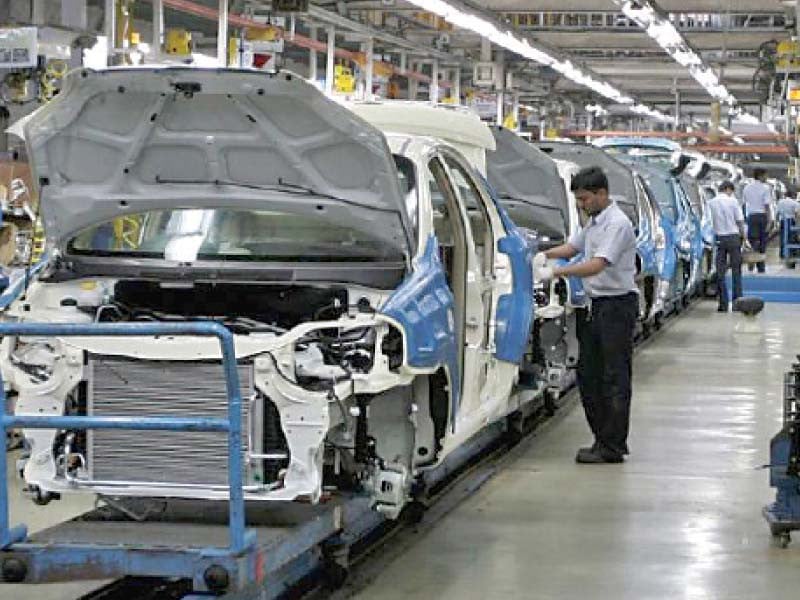
Export competitiveness in auto sector of Pakistan
KARACHI : The automobile sector in Pakistan is facing the brunt of the current economic crisis. The balance of payments-related challenges, which have led to not only restrictions on imports but also an economic slowdown, have hurt sales of new automobiles in the country.
According to recent statistics shared by Pakwheels.com, car sales in the first quarter of the current fiscal year plunged 44%, while bus sales dived 32%. This raises questions about the performance of the automobile sector, raising concerns about its versatility as it is mainly inward-looking with negligible exports.
I presented the international trade patterns in the automobile industry at the recent Pakistan Auto Parts Show Symposium 2023 held at the Karachi Expo Centre. The respective data for analysis is extracted from various sources including CEPII’s BACI dataset, the World Bank’s World Information Trade Solution, Unctad’s NTM Hub and ADB’s Multiregional Input Output Table.
Total global trade in this sector exceeded $1.8 trillion in 2021, with $800 billion contributed by the trade of intermediate products such as engines, brakes, gearboxes, other parts and accessories.
The five largest exporters were Germany, Japan, China, the United States and Mexico. All of them reported more than $100 billion worth of exports. Germany and China also reported more than $100 billion in exports of parts and accessories.
Major exporters in this industry not only export final vehicles but also export parts and accessories, having significant values, used in the production of final vehicles.
However, trade in this sector is highly regional. Mexico primarily trades with the US, while Thailand, a major exporter in the Asian region, trades mainly with its East Asian counterparts.
It is also important to mention that the largest exporters are also important destination markets, highlighting the significance of intra-industry trade in this sector.
Unfortunately, Pakistan only exported $160 million worth of goods in this industry, with 85% constituting parts and accessories. Pakistan has highly regressive trade policies that have limited the growth of manufacturers in this sector.
The participation in global value chains (GVCs), where a product crosses an international border more than once in its production process, is integral to the international trading activities in the automotive sector.
Backward linkages, which involve value addition in foreign products consumed by the importing country as imported inputs are transformed into export products, are more common than forward linkages for the top middle-income exporters.
The latter involves value addition in domestically produced goods that are further transformed into export products in the importing country. Therefore, the goods produced for exports in the automobile sector mostly demand imported inputs.
The value generated from participation in GVCs topped $20 billion in 2022 in China, Mexico, India, and Thailand. It was only $80 million in Pakistan. Although China and India have invested in forward linkages, backward linkages continue to dominate in this sector.
The participation in GVCs requires a reduction in import tariffs, particularly for parts and accessories. Pakistan has the highest rate of tariffs on imports of parts and accessories at 18%, while the other middle-income counterparts have reduced it to below 10%.
It is virtually non-existent in Mexico and Turkey, increasing their ability to trade in parts and accessories.
However, the use of technical non-tariff measures (NTMs) to ensure higher quality standards of products and safety of consumers is more prominent. China covers all its imports with at least one technical NTM, while the US and the EU cover almost all their imports with NTMs.
Middle-income exporters have also adopted such measures on a significant proportion of their imports. Unfortunately, the use of technical NTMs in Pakistan is limited, reporting the lowest coverage ratio and frequency index.
The recommendations for boosting exports involve overhauling of the current mindset. The focus of major manufacturers is often on increasing local production such that the increase in localisation is counted as an achievement of success.
Localisation in an environment where regulations on quality standards and certifications are not only poorly enforced but also non-existent coupled with high tariff rates can result in significant divergence between the quality of goods produced in Pakistan and in markets where export competitiveness drives growth. This can rather encourage dumping of low-quality goods while reducing access to new technological advances in the sector. The result is national welfare loss.
The lack of innovative activities that herald new technologies as well as of product churning, where new products are not only added but old redundant products are dropped, has led to the recent slowdown in the industry.
It is recommended that the SMEs in the sector are facilitated by the government so that they participate in international trading activities. SMEs must be encouraged to enter global and regional value chains.
Digitalisation of trade procedures and processes through the Pakistan Single Window is a step in the right direction as it reduces trade obstacles and delays.
The government and trade associations must focus on developing and improving technical capacities of the producers and human resources involved in this sector. This not only requires investments in better institutes but also development of more effective clusters and agglomerations involving producers across the production chains.
The potential can only be tapped if the producers shift from an inward-looking mindset that focuses on localisation towards a more outward-looking approach that embraces the benefits of competition and fosters innovative activities.

